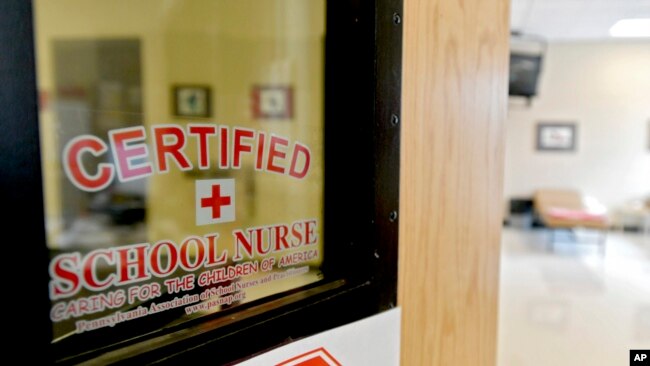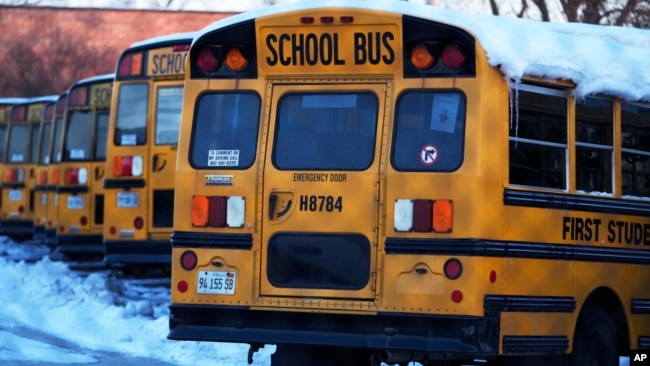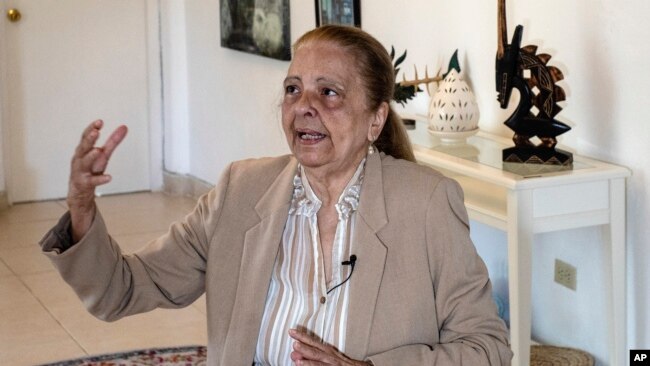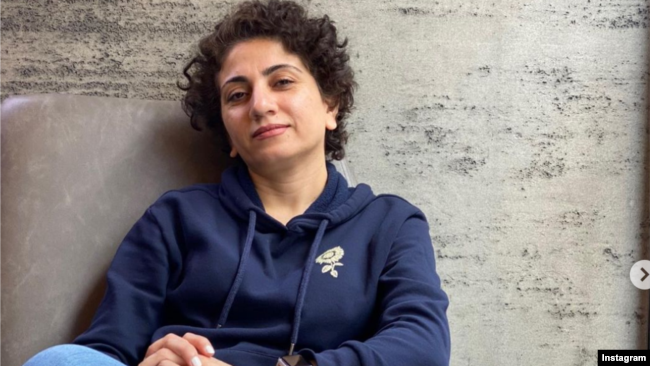미국 학교들은 가벼운 병에 걸린 아이들이 어쨌든 다닐 것을 제안합니다
More US Schools Suggest Mildly Sick Kids Attend Anyway
페이지 정보
작성자 By Associated Press 작성일 24-02-10 03:21 댓글 0본문

2016년 8월 15일, 사진은 펜실베니아(Pennsylvania)의 Bellefonte Area School District 인증 학교 간호사 사무실 앞을 보여주고 있습니다.
This Aug. 15, 2016, photo shows the front of the Bellefonte Area School District certified school nurses office in Pennsylvania.
Trenace Dorsey-Hollins의 5살 된 딸은 작년에 많이 아팠습니다. Dorsey-Hollins는 학교 지침을 따랐고 기침이나 인후통이 있거나 더 심할 때 완전히 나을 때까지 집에 머물렀습니다.
Trenace Dorsey-Hollins' 5-year-old daughter was sick a lot last year. Dorsey-Hollins followed school guidelines and kept her home when she had a cough or a sore throat — or worse — until she was completely better.
연말이 다 되어갈 무렵, 텍사스 포트워스에 있는 학교는 딸이 왜 그렇게 많은 학교를 결석했는지에 대해 이야기하기 위해 그녀를 불렀습니다.
Near the end of the year, the school in Fort Worth, Texas, called her in to talk about why her daughter had missed so much school.
팬데믹 기간 동안, 학교들은 부모들과 아이들에게 어떠한 질병의 징후라도 집에 머물 것을 촉구했습니다. 비상 사태가 끝났음에도 불구하고, 그녀는 아무도 그 규칙들이 바뀌었다는 것을 분명히 하지 않았다고 말했습니다.
During the pandemic, schools urged parents and children to stay home at any sign of illness. Even though the emergency has ended, she said no one has clarified that those rules have changed.
"매우 혼란스럽습니다," 라고 그녀가 말했습니다.
"It's extremely confusing," she said.
과거에는, 아이가 100 이상의 열이 없다면, 그들을 학교에 보내도 괜찮습니다," 라고 5세와 13세 아이의 엄마가 말했습니다. "하지만 이제는 아이들이 기침을 하거나 재채기를 한다면, 여러분은 아이들을 집에 머물게 하고 싶어할지도 모릅니다. 그게 뭘까요?"
"In the past, if the child didn't have a fever over 100, then it's OK to send them to school," said the mother of a 5- and 13-year-old. "But now it's like if they have a cough or they're sneezing, you might want to keep them home. Which is it?"
아이들을 언제 집에 두어야 하는지에 대한 매우 다양한 지침은 혼란을 가중시켰을 뿐인데, 많은 사람들은 이것을 만성적인 학교 결석의 전국적인 유행의 한 요인으로 보고 있습니다. 일부 옹호자들과 학교 제도, 그리고 캘리포니아 주는 현재 아이들이 코감기나 이나 잉꼬와 같은 다른 성가신 질병에 걸렸을 때도 수업에 나오도록 권장하고 있습니다.
Widely varying guidance on when to keep children home has only added to the confusion, which many see as a factor in the nationwide epidemic of chronic school absences. Some advocates and school systems — and the state of California — are now encouraging kids to come to class even when they have the sniffles or other nuisance illnesses like lice or pinkeye.
가족들은 더 이상 어떤 질병의 징후에도 아이들을 집에 머물지 말아야 한다는 것을 들을 필요가 있다고 출결 업무의 전무이사인 헤디 창은 말했습니다. 출결 향상을 목표로 하는 이 국가 비영리 단체는 부모들에게 아이들이 일상 활동에 참여할 수 있다면 학교에 보내라고 촉구하는 자체 지침을 발표했습니다.
Families need to hear they no longer must keep kids home at any sign of illness, said Hedy Chang, the executive director of Attendance Works. The national nonprofit aimed at improving attendance has issued its own guidance, urging parents to send kids to school if they can participate in daily activities.
"우리는 이제 아이들과 가족들을 다시 참여시키고 그들의 생각을 바꿔야 합니다," 라고 창씨가 말했습니다.
"We have to now re-engage kids and families and change their thinking about that," Chang said.
미국 소아과 학회는 열이 나거나 구토, 설사를 하거나 학생들이 "수업에 참여하기에 충분히 좋지 않을 때" 집에 머물 것을 권장합니다
The American Academy of Pediatrics recommends staying home when there's fever, vomiting or diarrhea, or when students "are not well enough to participate in class."
하지만 많은 교육구들은 이를 훨씬 뛰어넘어, 출석을 배제해야 한다고 말하는 아찔한 증상들을 묘사하고 있습니다. Dorsey-Hollins의 막내딸이 유치원에 다니는 Fort Worth Independent School District는 아이가 기침, 인후통 또는 발진이 있으면 집에 머무르라고 조언합니다. 지역 지침에 따라, 학생은 학교로 돌아가기 전에 약 없이 24시간 동안 "열이" 없어야 합니다.
But many districts go far beyond that, delineating a dizzying array of symptoms they say should rule out attendance. Fort Worth Independent School District, where Dorsey-Hollins' youngest daughter attends kindergarten, advises staying home if a child has a cough, sore throat or rash. A student should be "fever-free" for 24 hours without medication before returning to school, per district guidelines.
텍사스의 오스틴 독립 교육구는 집에 머무르는 이유로 "눈 충혈", "알 수 없는 발진" 또는 "열린, 진물이 나는 병변"을 나열합니다. 이가 있는 어린이들은 뉴욕 시 학교의 수업에 참석할 수 없습니다. 메릴랜드의 몽고메리 카운티는 배가 아프거나 " 창백하거나 상기된 얼굴" 또는 "코에서 두꺼운 노란색 분비물"이 있는 어린이를 집에 둘 것을 권장합니다
Austin Independent School District in Texas lists "eye redness," "undetermined rash" or "open, draining lesions" as reasons to stay home. Kids with lice can't attend class in New York City schools. Maryland's Montgomery County recommends keeping a child home with a stomachache, "pale or flushed face" or "thick yellow discharge from the nose."
보스턴 어린이 병원의 소아과 의사이자 하버드 의대 교수인 클레어 매카시는 "적절한 균형을 찾는 것은 어렵고, 다른 곳에서 다르게 접근하는 것은 이해할 수 있다"고 말했습니다.
Finding the right balance is difficult, and it's understandable that different places would approach it differently, said Claire McCarthy, a pediatrician at Boston Children's Hospital and professor at Harvard Medical School.
"학교나 학군마다 질병에 대한 내성이 다릅니다," 라고 매카시가 말했습니다.
"Each school or school district has a different tolerance for illness," said McCarthy.
이 모든 것은 많은 부모들을 어리둥절하게 만듭니다.
It all leaves many parents feeling puzzled.

파일 - 눈 덮인 스쿨버스가 일리노이주 휠링의 한 주차장에 앉아 있습니다
FILE - Snow-covered school buses sit in a parking lot in Wheeling, Ill., Jan. 16, 2024.
"이것은 투쟁입니다," 라고 뉴욕 롱아일랜드의 한 중학교 2학년생의 엄마 말리카 엘윈이 말했습니다.
"It's a struggle," said Malika Elwin, a mother of a second grader on New York's Long Island.
딸아이는 다른 아이들을 노출시키거나 딸의 콧물로 선생님께 부담을 주고 싶지 않아서, 딸아이가 아직 감기 증상이 있어서 좀 나아졌음에도 불구하고 집에 더 오래 머무르게 된 것입니다. "그러면 딸아이는 하루 종일 아무 일 없이 여기서 뛰어다니기 때문에 저는 그것을 후회합니다."라고 그녀는 말했습니다.
She doesn't want to expose other children or burden the teacher with her daughter's runny nose, so she's kept her daughter home longer even though she's feeling better because she still has cold symptoms. "Then I regret that because she just runs around here all day perfectly fine," she said.
COVID-19 양성 반응을 보이는 사람들에게 CDC는 여전히 최소 5일 동안 집에 머무르며 격리할 것을 요구합니다. 하지만 주(州)와 개별 학교의 지침은 매우 다양합니다. 일부 학교 시스템에서는 양성 반응을 보이는 학생들이 무증상인 한 학교에 갈 수 있도록 지침을 제공합니다.
For those who test positive for COVID-19, the CDC still calls for staying home and isolating for at least five days. But guidance from states and individual schools varies widely. In some school systems, guidance allows for students who test positive to go to school as long as they are asymptomatic.
Trenace Dorsey-Hollins는 그녀와 같은 부모들은 추적하기가 어렵다고 말했습니다.
Trenace Dorsey-Hollins said it is hard for parents like her to keep track.
그녀는 "열이 없고 코로나 양성 반응이 나오지 않았다면 기침을 하며 학교에 앉아 있어도 되는 것일까요?"라고 말했습니다.
"Is it actually OK to sit in school with a cough if you don't have a fever and haven't tested positive for COVID?" she said.
팬데믹 기간 동안 학교가 문을 닫았을 때, 아이들은 학업에서 뒤쳐졌습니다 – 그리고 계속된 결석은 아이들이 따라잡기를 어렵게 만들었습니다. 그래서 일부 당국은 질병에 대한 그들의 내성을 재평가했습니다. 2021-2022 학년도 동안, 팬데믹 이전의 15%에서 4분의 1 이상의 학생들이 최소 10%의 학교를 결석했습니다.
When schools closed during the pandemic, kids fell behind academically — and continued chunks of school absences have made it harder for them to catch up. So some authorities have re-evaluated their tolerance for illness. During the 2021-2022 school year, more than a quarter of students missed at least 10% of the school year, up from 15% before the pandemic.
학교를 그렇게 많이 빠지게 되면 학생들은 책을 읽거나 졸업하지 못할 위험에 처하게 됩니다. 결석한 학생들은 또한 식사, 또래와 돌보는 성인들과의 사교, 신체 운동, 정신 건강 상담과 건강 관리에 대한 접근성을 잃게 됩니다. 즉, 학교를 빠지게 되면 그 자체로 건강 효과가 있습니다.
Missing that much school puts students at risk of not learning to read or graduate. Absent students also lose out on meals, socialization with peers and caring adults, physical exercise, and access to mental health counseling and health care. In other words, missing school has its own health effects.
그리고 한 학급에서 만성 결석이 많이 발생하는 것을 보면, 선생님이 자리를 비운 학생들의 방향을 바꾸는데 시간을 써야 하기 때문에 그 학급에 있는 학생들에게 상처를 줍니다.
And when a class sees high levels of chronic absenteeism, it hurts the students who are there because a teacher has to spend time reorienting the students who've been away.
작년에 25%의 학생들이 학년의 10%를 결석했던 캘리포니아 주는 올 가을 병가 지도에 새로운 접근법을 취했습니다. 이 지도는 아이가 언제 집에 있어야 하는지만 말하는 대신, 아이가 약간 몸이 좋지 않을 수 있지만 학교에 올 수 있는 상황을 설명합니다.
The state of California, where 25% of students last year missed 10% of the school year, took a new approach to sick-day guidance this fall. Instead of only saying when a child should stay home, the guidance describes circumstances when a child might be slightly unwell but can come to school.
전반적으로, 학생들은 증상이 "상습적인 활동에 의미 있게 참여하는 것을 막" 때 집에 있어야 합니다. 하지만 설사를 하며 학교에 오는 것은 아이가 제 시간에 화장실에 갈 수 있기만 하면 괜찮습니다. 가벼운 감기 증상, 인후통, 가벼운 발진이나 충혈이 있는 학교에 가는 것도 모두 "괜찮습니다."
Overall, students should stay home when their symptoms "prevent them from participating meaningfully in routine activities." But coming to school with diarrhea is all right as long as a child can make it to the toilet in time. Going to school with mild cold symptoms, sore throat, mild rash or pinkeye are all "OK."
게다가, 캘리포니아는 학교로 돌아가기 전에 열이 나거나 구토를 한 후 24시간을 기다려야 한다고 고집하지 않습니다. 밤새 열이 나거나 구토를 하지 않는 것으로 충분합니다.
What's more, California doesn't insist on waiting 24 hours after a fever or vomiting before returning to school. Going fever-free or without vomiting overnight is enough.
보스턴 공립학교도 학부모를 위한 온라인 권장 사항에서 비슷한 입장을 취했습니다. "호흡기 감염은 일반적입니다."라고 온라인 안내서에 적혀 있습니다. "만약 아이가 열이 없고, 활동이 감소하거나 다른 증상이 나타나지 않는다면, 아이가 집에 있을 필요가 없습니다."
Boston Public Schools took a similar stance in its online recommendations for parents. "Respiratory infections are common," reads the online guidance. "If the child does not have fever, does not appear to have decreased activity or other symptoms, it is not necessary for the child to stay home."
캘리포니아 오클랜드에 있는 루츠 지역 건강 센터를 이끄는 노하 아보엘라타는 지도의 변화가 저소득 지역 사회와 유색인종에게 불균형적인 영향을 미칠 수 있다고 말했습니다. 그녀는 이 지역 사회의 사람들이 다세대 주택에 살 가능성이 높고, 대중 교통을 이용하거나, 집에서 환기가 잘 되지 않을 수 있다고 말했습니다. 사람들이 밖에 나가 있거나 아플 때, 취약한 사랑하는 사람들이 위험에 처할 수 있습니다.
The shift in guidance could have a disproportionate impact on low-income communities and people of color, said Noha Aboelata, who leads the Roots Community Health Center in Oakland, California. People in those communities might be more likely to live in multigenerational homes, take crowded public transportation or have poor ventilation in their homes, she said. When people are out and about while sick, vulnerable loved ones could be put at risk.
그녀는 전염병이 전염될 때 집에 머무르는 것과 아플 때 자신과 가족을 돌보는 것에 대한 교훈이 공중 보건 비상 사태보다 오래 지속되기를 바랐습니다. 대신, 그녀는 "진자가 다른 방향으로 격렬하게 흔들리는 것 같습니다."라고 말했습니다
She had hoped the pandemic's lessons about staying home when contagious and taking care of yourself and your family when sick would outlast the public health emergency. Instead, she said, "it feels like the pendulum is swinging fiercely back in the other direction."
하지만 학교 결석을 둘러싼 문화를 바꾸는 것은 단순히 지도를 하는 것을 넘어요.
But changing the culture around school absences goes beyond just issuing guidance.
샌디에고 카운티 교육청의 출석을 감독하는 트레이시 슈미트는 샌디에고 카운티의 일부 학교들은 가벼운 병에 걸린 상태에서도 아이들이 학교에 다닐 수 있도록 허용하는 캘리포니아의 새로운 지침을 알지 못하는 것 같다고 말했습니다.
Some schools in San Diego County seem unaware of California's new guidance allowing kids to attend school while mildly sick, said Tracy Schmidt, who oversees attendance for the county Office of Education.
그래도 다른 사람들은 그것을 채택했고, 아이들이 아프다고 신고하기 위해 전화를 하는 부모들과 증상들에 대해 이야기하기 시작했고, 아이들을 데리고 와서 어떻게 진행되는지 살펴보라고 촉구했습니다. 이것은 그녀에게 이 지침에 대해 더 많은 학교와 부모들이 알게 되면서, 학생들이 학교를 덜 빠지게 될 것이라는 희망을 줍니다.
Still, others have adopted and it and have begun talking through symptoms with parents who call to report their children are sick, urging them to bring them in and see how it goes. It gives her hope that as more schools and parents learn about this guidance, students will miss less school.
"우리 아이들이 있어야 할 가장 중요한 곳은 학교입니다."라고 그녀는 말했습니다. "우리는 공공 안전 비상 상황이었기 때문에 팬데믹 기간 동안 채택해야 했던 이러한 사고방식을 뒤로하고 떠나야 합니다."
"The most important place for our kids to be is school," she said. "We need to leave behind this mindset that we had to adopt during the pandemic because we were in a public safety emergency."
출처 : VOANews
댓글목록 0
등록된 댓글이 없습니다.

















